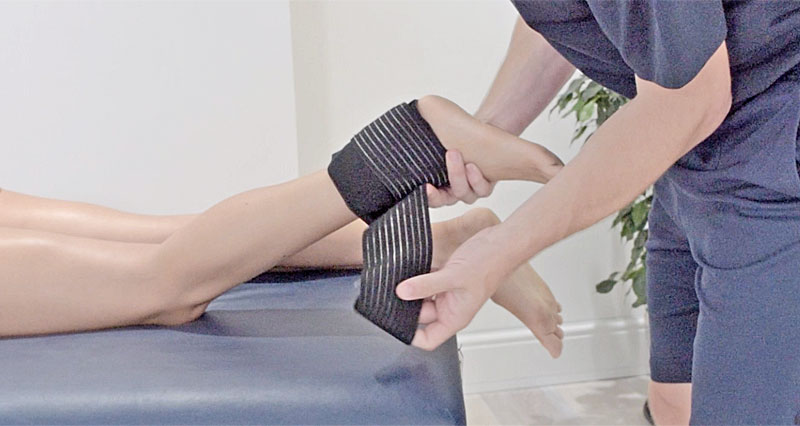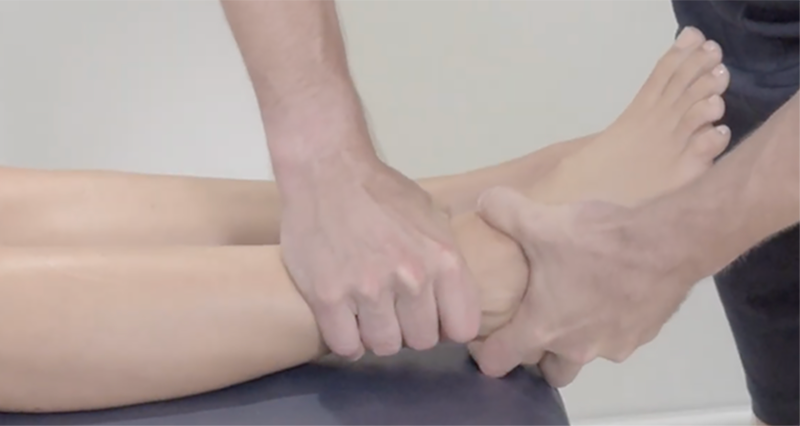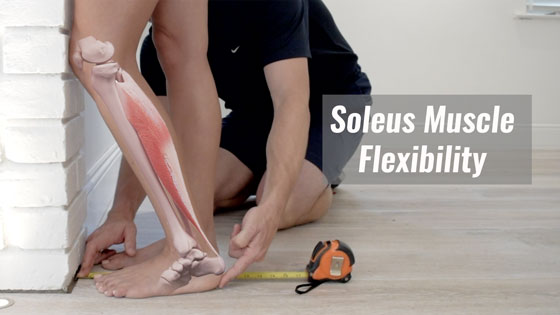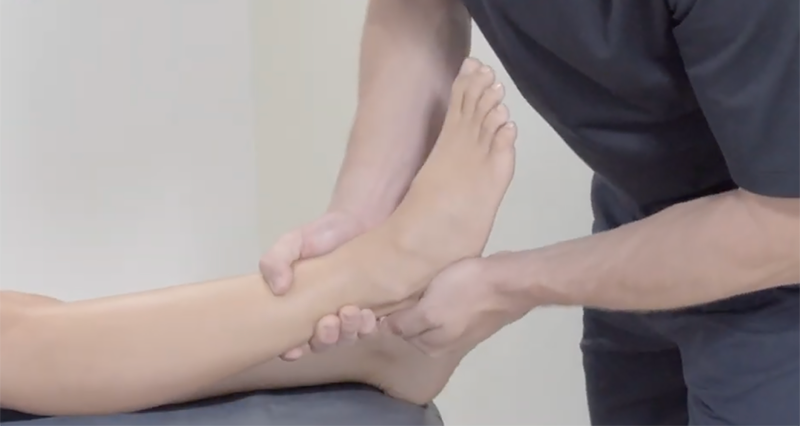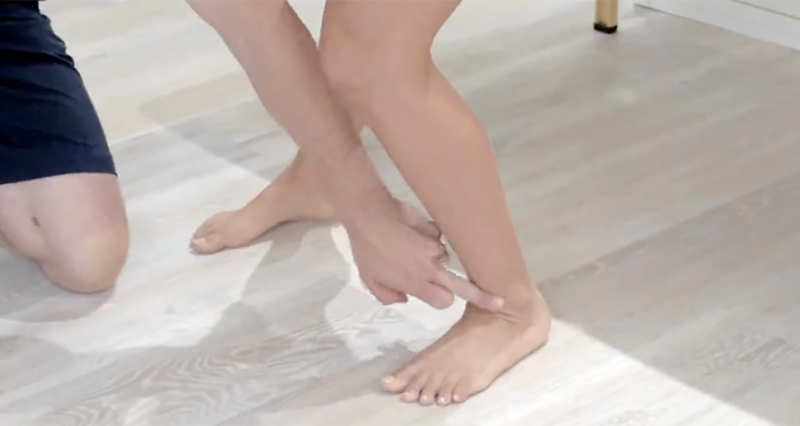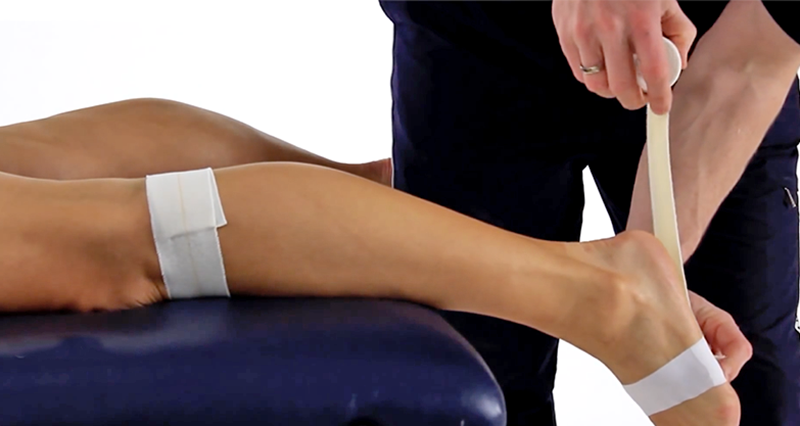Thompson’s test helps diagnose a torn or ruptured Achilles tendon. Sometimes it is difficult to tell if you have a complete rupture of the Achilles tendon just by looking at it, or from how painful it is. This is because other muscles compensate. Therefore, if you suspect a complete rupture then it is important to have your injury properly assessed.
How to perform Thompson’s test
- Lie face down on a couch or table with your feet hanging naturally over the edge.
- Perform Thompson’s test by squeezing your calf muscles at the belly of the muscle.
- In a healthy ankle, your foot should move each time you squeeze the muscle.
- However, if you have a complete rupture of the Achilles tendon then your foot will not move as expected.
Other signs to check
When performing an examination of a suspected torn Achilles tendon your doctor will look for the following:
Range of motion
Lie face down on a treatment or massage table with your feet over the edge. Your feet should hang down naturally. If the injured foot hangs directly down when compared to the uninjured one, then this could be an indication of a torn Achilles tendon.
A gap in the Achilles tendon
Is there/was there a gap of approximately 3 to 6 cm in your Achilles tendon directly after injury? Often, an hour or so after injury, there is too much swelling. As a result, a gap in the tendon is not always obvious.
Muscle strength
Has your strength significantly reduced when trying to go up on tiptoes (plantar flexion)? If your Achilles is torn you will have more difficulty in plantar flexing your ankle against resistance when compared to the uninjured one. Other muscles such as the tibialis posterior will enable you to plantar flex your ankle, however, it will be significantly weaker.
In addition to the above signs, symptoms of a torn Achilles tendon often include:
- A sudden, sharp pain in the back of the ankle or calf, often described as feeling like being kicked or hit in the area.
- A “popping” or “snapping” sensation at the time of injury.
- Difficulty walking, especially when trying to push off with the affected foot or walk upstairs.
- Swelling, bruising, or tenderness around the heel.
- A gap or depression can sometimes be felt in the tendon just above the heel bone.
